General
First Makerere Workshop on Social Systems & Computation
Published
15 years agoon
Summary Top researchers from Northwestern University (Chicago), University of British Columbia (Vancouver) and Makerere (Kampala) are teaming up to offer a workshop on cutting-edge methods for computational modeling of social systems, algorithm design, and machine learning. The sessions will take place between December 3rd and 10th, and there is no cost for attendance; however, registration is mandatory.
Summary Top researchers from Northwestern University (Chicago), University of British Columbia (Vancouver) and Makerere (Kampala) are teaming up to offer a workshop on cutting-edge methods for computational modeling of social systems, algorithm design, and machine learning. The sessions will take place between December 3rd and 10th, and there is no cost for attendance; however, registration is mandatory.
Attendance is limited to academic staff working at a Ugandan university; students doing research in related areas may also be given special permission to attend if space permits. Participants will have the opportunity to publish papers in official, reviewed workshop proceedings at a later date. A certificate of completion will be provided to participants who attend at least two thirds of workshop sessions.
Overview Traditionally, computer science has viewed data as coming from either an adversarial source or from nature itself, giving rise to worst-case and average-case design and analysis of optimization algorithms. In recent years with the advent of modern technologies like the Internet, it has become increasingly apparent that neither of these assumptions reflects reality. Data is neither adversarial nor average, but rather inputs to algorithms are constructed by a diverse set of self-interested agents in an economy, all aiming to maximize their own happiness. Thus the raw data is often not available to an algorithm designer, but must be solicited from the agents–that is, the designer faces an economic constraint. The primary goal of this workshop is to explore the implications of this observation. We will study the performance of algorithms in the presence of utility-maximizing agents and ask whether alternate designs might create incentives for agents to act more optimally. Simultaneously, we will look at other more traditional optimization problems such as approximation and learning and techniques to solve them, pointing out that these may often be leveraged to solve issues in the economic setting.
Related Research Areas Computer Science Theory; Artificial Intelligence; Economics; Business
Format The workshop will consist of six 3-hour lectures, plus meal/breakout sessions for informal research discussion. Spaces are strictly limited, and attendees must pre-register. We will aim to select topics and session times that are best for our participants. To register, and to indicate your preferences for topics and dates, please complete the survey at http://www.surveymonkey.com/s/WWGMKZG.
List of Candidate Topics The workshop will consist of up to six of the following twelve topics.
Introduction to Game Theory
Game theory is the mathematical study of interaction among independent, self-interested agents. It has been applied to disciplines as diverse as economics, political science, biology, psychology, linguistics—and computer science. This tutorial will introduce what has become the dominant branch of game theory, called noncooperative game theory, and will specifically describe normal-form games, a canonical representation in this discipline. The tutorial will be motivated by the question: "In a strategic interaction, what joint outcomes make sense?"
Voting Theory
Voting (or "Social Choice") theory adopts a“designer perspective” to multiagent systems, asking what rules should be put in place by the authority (the “designer”) orchestrating a set of agents. Specifically, how should a central authority pool the preferences of different agents so as to best reflect the wishes of the population as a whole? (Contrast this with Game Theory, whichadopts what might be called the “agent perspective”: its focus is on making statements about how agents should or would act in a given situation.) This tutorial will describe famous voting rules, show problems with them, and explain Arrow's famous impossibility result.
Mechanism Design and Auctions
Social choice theory is nonstrategic: it takes the preferences of agents as given, and investigates ways in which they can be aggregated. But of course those preferences are usually not known. Instead, agents must be asked to declare them, which they may do dishonestly. Since as a designer you wish to find an optimal outcome with respect to the agents’ true preferences (e.g., electing a leader that truly reflects the agents’ preferences), optimizing with respect to the declared preferences will not in general achieve the objective. This tutorial will introduce Mechanism Design, the study of identifying socially desirable protocols for making decisions in such settings. It will describe the core principles behind this theory, and explain the famous "Vickrey-Clarke-Groves" mechanism, an ingenious technique for selecting globally-utility-maximizing outcomes even among selfish agents. It will also describe Auction Theory, the most famous application of mechanism design. Auctions are mechanisms that decide who should receive a scarce resource, and that impose payments upon some or all participants, based on agents' "bids".
Constraint Satisfaction Problem Solving
This hands-on tutorial will teach participants about solving Constraint Satisfaction Problems using search and constraint propagation techniques. This is a representation language from artificial intelligence, used to describe problems in scheduling, circuit verification, DNA structure prediction, vehicle routing, and many other practical problems. The tutorial will consider the problem of solving Sudoku puzzles as a running example. By the end of the session, participants will have written software (in Python) capable of solving any Sudoku puzzle in less than a second.
Bayesian methods and Probabilisitic Inference
Bayesian methods are commonly used for recognising patterns and making predictions in the fields of medicine, economics, finance and engineering, powering all manner of applications from fingerprint recognition to spam filters to robotic self-driving cars. This session will show how principles of probability can be used when making inferences from large datasets, covering issues such as prior knowledge and hyperpriors, the construction of "belief networks", and nonparametric methods such as Gaussian processes. Several applications will be demonstrated.
Computer Vision
It is useful to be able to automatically answer questions about an image, such as "is this the face of person X?", "how many cars are there on this street?" or "is there anything unusual about this x-ray?". This session will look at some of the current state of the art in computer vision techniques, including methods for representing the information in an image (feature extraction), and to recognise objects in an image given such a representation. We will particularly spend some time looking at approaches which have been found to work well empirically on object recognition, such as generalised Hough transforms, boosted cascades of Haar wavelet classifiers, and visual bag-of-words methods. Locally relevant applications in crop disease diagnosis, parasite detection in blood samples and traffic monitoring will be demonstrated as illustrating examples.
Learning Causal Structure from Data
Until a few decades ago, it was thought to be impossible to learn causes and effects from purely observational data without doing experiments. Sometimes, however, it is impossible to do experiments (e.g. in some branches of genetics), or experiments may be costly or unethical (e.g. situations in climate change or medicine), so the emergence of computational methods for distinguishing causes, effects and confounding variables is likely to have wide implications. Some principles are now understood for learning the causal structure between different variables, and this session will explain the most successful current approaches, their possibilities and their limitations.
Internet Search and Monetization
The internet is one of the most fundamental and important applications of computer science. Central to its existence are search engines which enable us to find content on the web. This module focuses on the algorithms like PageRank that these search engines use to help us find webpages. It also studies how these engines make money through advertising.
Social Networks
Social networks describe the structure of interpersonal relationships and have many alarmingly predictable properties. While most people have just a few friends, most social networks have at least a few very popular people. Furthermore, most people are closely linked to every other person so that a message (or an idea or a disease) can spread rapidly throughout the network. Finally, social networks tend to be fairly clustered — i.e., if two people share a common friend it is quite likely that they are also friends. This module will discuss the typical structures of social networks, models that explain these structures, and the impact of these structures on activities in the social network such as message routing or the adoption of new technologies.
Two-Sided Matching Markets
Many markets involve two “sides'' that wish to be matched to one another. For example, a marriage market matches women to men; a job market matches workers to employers. In such settings, people on each side have strict preferences over the options on the other side of the market. Hence, a woman Julie may like David best, John second best, and Christopher third. David on the other hand may prefer Mary to Julie. In such settings, what matches might we expect to form? Can these matches be computed by a centralized algorithm, a match-maker for example, and what are the corresponding incentives of the participants? These questions are of fundamental importance as such centralized algorithms are in use in many important markets. In many countries, medical students are matched to hospitals using such algorithms, or school children to schools.
Approximation Algorithms
In the field of algorithms, many tasks turn out to be computationally difficult. That is, the time to complete the task is fundamentally large compared to the size of the problem. For example, consider the problem of finding the optimal way to visit 10 cities, visiting each exactly once. To minimize travel time, one could test all possible travel schedules, but for 10 cities there are already 3.5M of them! Unfortunately, there is not a significantly quicker way to find the optimal solution. However, one can find an approximately optimal solution quickly. That is, with just a few things to check, one can design a schedule that takes at most 50% more time than the optimal one. In this module we showcase a few general techniques for computing approximate solutions to hard problems, including the use of randomization and linear programming.
Graph Theory
A graph is a combinatorial object consisting of nodes and edges, and is a extremely valuable abstraction of many practical problems. For example, nodes might represent jobs and edges might connect pairs of jobs that can not be performed simultaneously. Alternatively, nodes might represent electronic components on a circuit board and edges the wiring that connects them. Many questions that arise in such domains can be cast as an optimization question in the corresponding graph. The number of workers required to complete all jobs in fixed time frame in the first example is at its heart a graph coloring problem. Asking whether one can lay out the circuit board so no two wires cross becomes the problem of determining which graphs have planar representations. This course defines graphs, shows how to solve a few fundamental graph problems, and applies them to practical settings.
Speaker Bios
Nicole Immorlica is an assistant professor in the Economics Group of Northwestern University's EECS department in Chicago, IL, USA. She joined Northwestern in Fall 2008 after postdoctoral positions at Microsoft Research in Seattle, Washington, USA and Centruum voor Wiskunde en Informatica (CWI) in Amsterdam, The Netherlands. She received her Ph.D. from MIT in Boston, MA, USA, in 2005 under the joint supervision of Erik Demaine and David Karger. Her main research area is algorithmic game theory where she investigates economic and social implications of modern technologies including social networks, advertising auctions, and online auction design.
Kevin Leyton-Brown is an associate professor in computer science at the University of British Columbia, Vancouver, Canada. He received a B.Sc. from McMaster University (1998), and an M.Sc. and PhD from Stanford University (2001; 2003). Much of his work is at the intersection of computer science and microeconomics, addressing computational problems in economic contexts and incentive issues in multiagent systems. He also studies the application of machine learning to the automated design and analysis of algorithms for solving hard computational problems.
John Quinn is a Senior Lecturer in Computer Science at Makerere University. He received a BA in Computer Science from the University of Cambridge (2000) and a PhD from the University of Edinburgh (2007). He coordinates the Machine Learning Group at Makerere, and his research interests are in pattern recognition and computer vision particularly applied to developing world problems.
You may like
General
From Campus to Career: Makerere Advancement Office, 91st Guild and the DFCU Foundation Equip Students with Financial and Employability Skills
Published
6 days agoon
December 5, 2025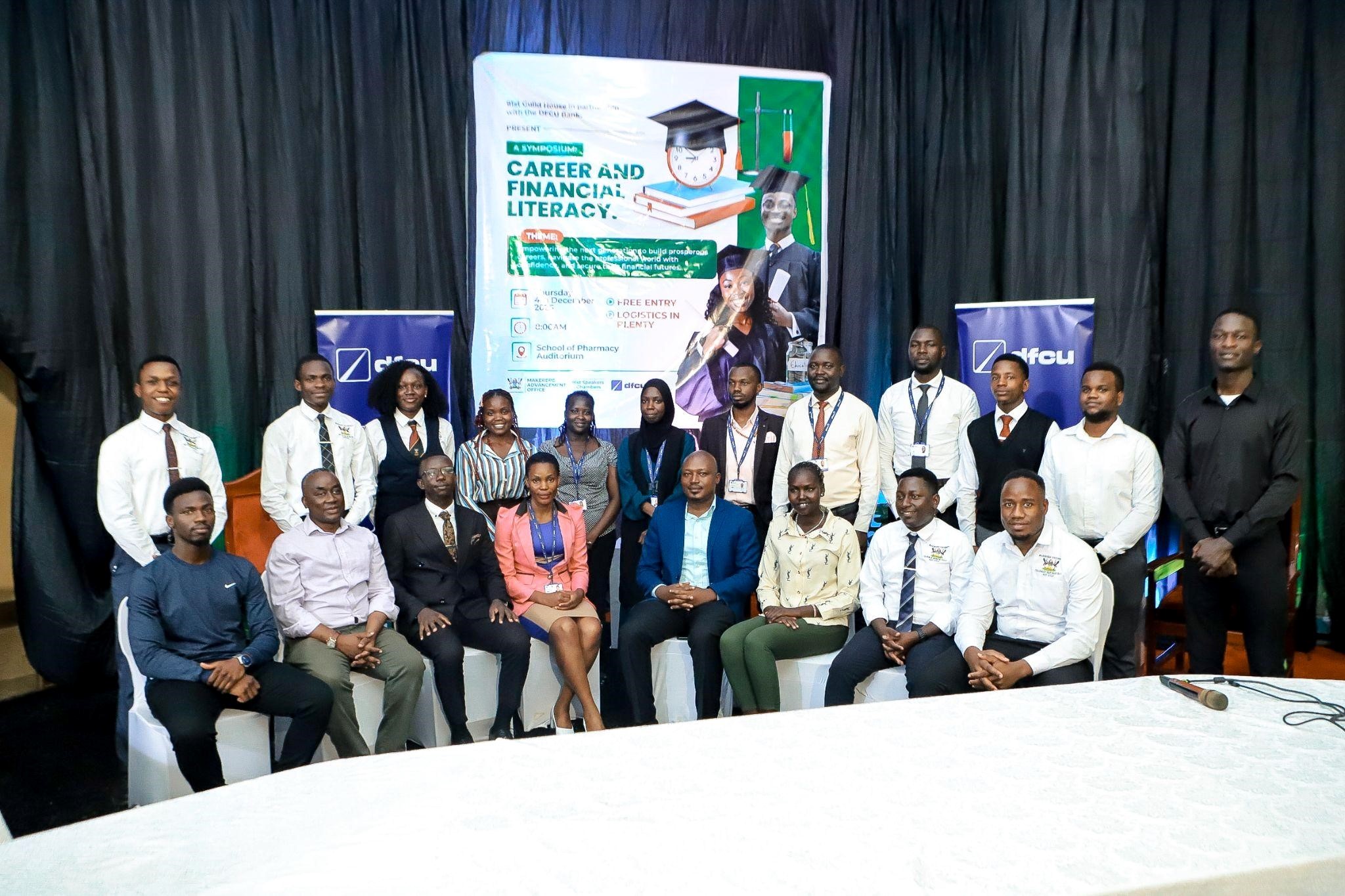
On 4th December, 2025, over 200 final-year students gathered at the School of Pharmacy Auditorium for the highly engaging Career & Financial Literacy Symposium, hosted by the 91st Students’ Guild, in partnership with the Makerere Advancement Office and the DFCU Foundation.
The symposium centred on student advancement through strategic partnership, convening students, administrators and development partners for a practical conversation on career readiness, financial literacy, employability, and personal development.
Advancement Through Partnerships
Speaking on behalf of the Makerere Advancement Office, Mr Awel Uwihanganye, Chief Advancement Officer, underscored the importance of partnerships such as the one with DFCU Foundation. He highlighted their importance in equipping students with marketplace skills and opportunities vital for individual growth after University.
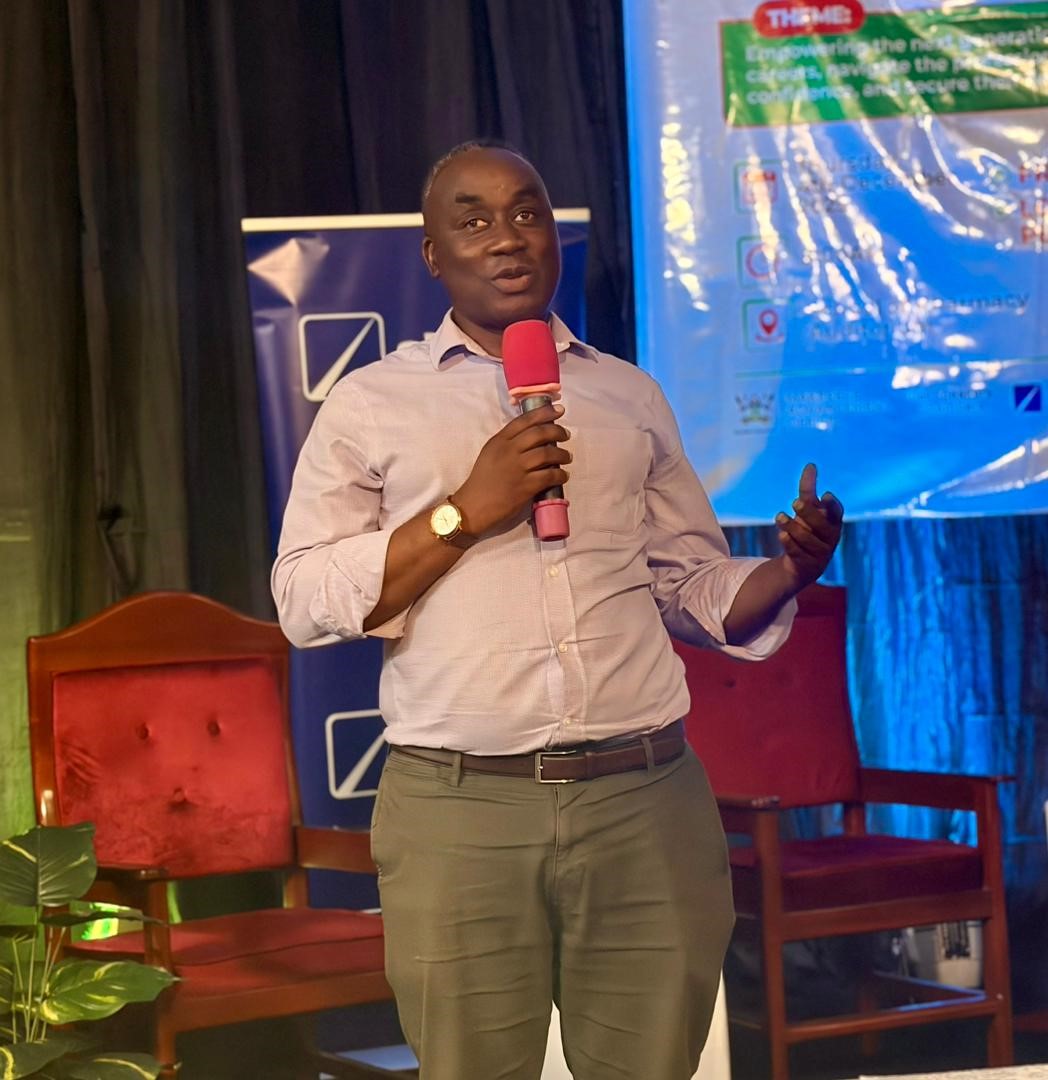
He reflected on the university journey as a formative period for ideas, innovation, and lifelong relationships, noting that:
“University is where impressions are made, and future networks are born. The friendships, character, and collaborations you develop here become foundations for careers, enterprises and leadership later in life.”
Mr. Uwihanganye encouraged students to embrace entrepreneurship, creativity and innovation, arguing that the emerging workforce is driven by technology, multi-tasking ability and idea generation rather than traditional single-path employment. He challenged students to build businesses, use digital platforms productively, and regard employment as only one income stream, not the only one.
The Student Perspective — Discipline, Skills and Trust
Speaking on student growth and personal development, Dr. Rodney Rugyema, Deputy Dean of Students, highlighted the realities facing new graduates, especially those entering the job market for the first time. With humour and honesty, he urged students to approach growth intentionally and responsibly.

He called for delayed gratification, financial discipline and long-term decision-making, reminding students that wealth is built, not wished for. He emphasised the importance of skills beyond academic papers, stating that students must be equipped to create value, adapt, learn continuously, and gain competence relevant to modern work demands.
Dr. Rugyema underscored that trust, integrity and reliability remain the most non-negotiable pillars of professional advancement.
“Let people trust you enough to lend you an opportunity. Be a person who delivers. Your reputation is currency; it travels to rooms you are not in.” He noted
Financial Literacy for the Next Generation
The keynote training session was delivered by Mr. Simon Omara, Business Advisor representing the DFCU Foundation, who walked students through a highly practical presentation on financial planning, savings culture, credit management, record-keeping, career positioning and entrepreneurship.

With more than 10,000 graduates annually and less than 35% securing employment within the first year, Mr. Omara challenged students to practice financial and career ownership early. His presentation explored:
Key Competencies Students Must Build
- Financial management with a focus on budgeting, saving, and investing early
- Career readiness, CV development, interview skills, and personal branding
- Entrepreneurship and income diversification
- Record keeping and credit management
- Professional conduct and workplace preparation
He reminded students that the future belongs to those who are financially literate, skilled, trusted and entrepreneurial. Through relatable examples and actionable frameworks such as the 70–20–10 rule, the 7-second CV scan, and the 90-day post-graduation growth plan, Mr. Omara equipped participants with practical knowledge they could act upon immediately.
Why This Symposium Matters
This event stands as a testament to the power of partnership-driven student advancement, a core mandate of the Makerere Advancement Office. By convening industry partners like DFCU Foundation, the University continues to ensure that students graduate not only with knowledge, but with tools and readiness for opportunity.
The symposium strengthened linkages between academia and the labour market, expanded students’ perspective on financial independence, and emphasised the value of entrepreneurship, networks and character in shaping future leadership
The Makerere Advancement Office remains committed to facilitating opportunities that empower students to thrive beyond the gates of the University, through partnerships, mentorship, capacity-building, and exposure to real-world skillsets.
“ A degree alone is no longer enough. With partnership, preparation and purpose, our students can build futures anchored in knowledge, opportunity and resilience.” Mr Awel Uwihanganye noted during his remarks.
Caroline Kainomugisha is the Communications Officer, Makerere Advancement Office
General
Call For Expression of Interest: WEE-DiFine Research Initiative
Published
6 days agoon
December 5, 2025By
Mak Editor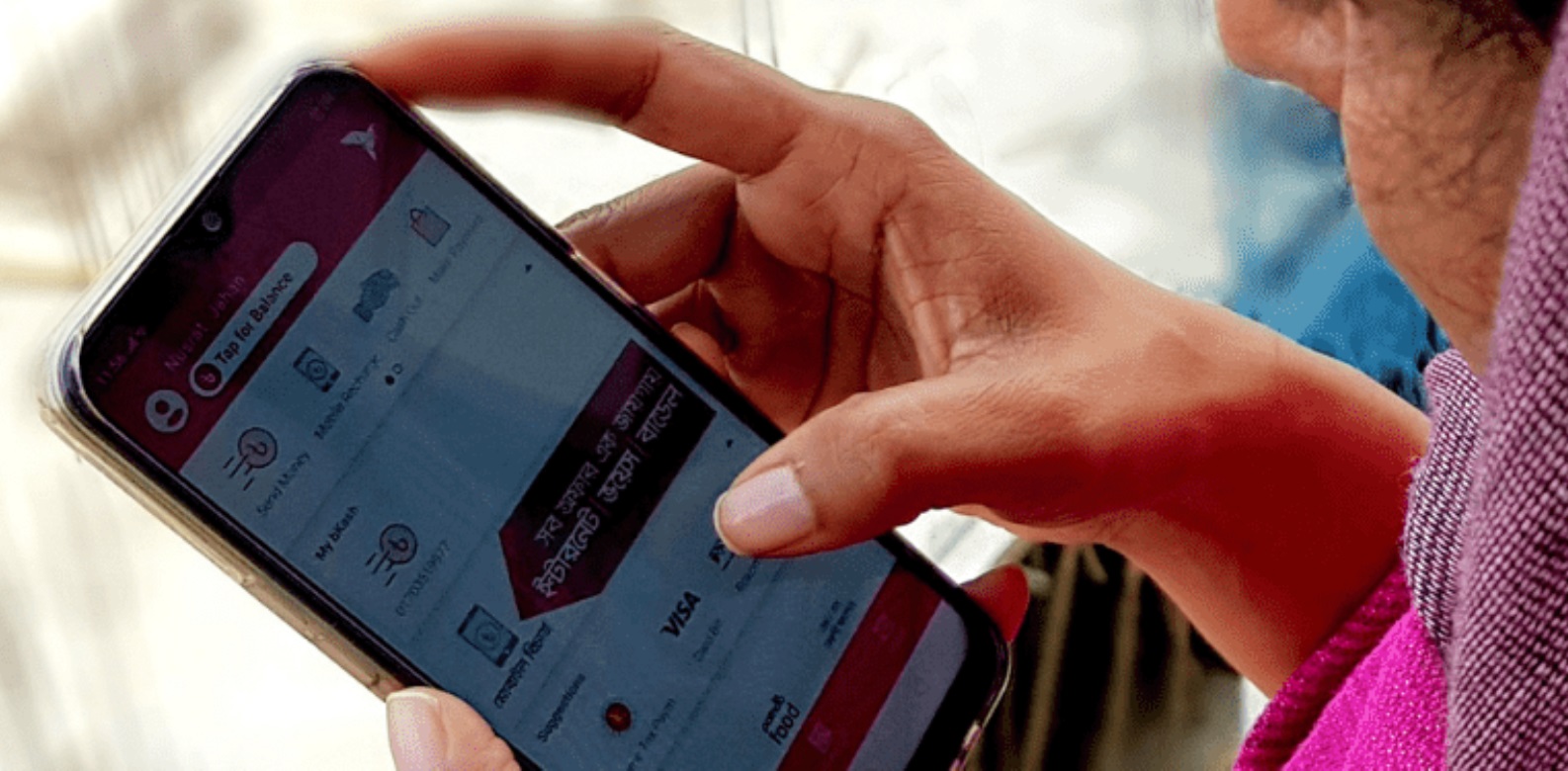
Introduction
WEE-DiFine, a BRAC Institute of Governance and Development (BIGD) led initiative made possible through funding from the Bill & Melinda Gates Foundation, is now accepting expressions of interest on a rolling basis for research projects that enhance the understanding of the role of digital financial services (DFS) in the economic empowerment of women by generating evidence on the causal mechanisms between the two.
Geographies of interest
WEE-DiFine is open to proposals from Sub-Saharan Africa, South Asia, and Southeast Asia. A comprehensive list of eligible countries is available in our FAQ document on our Resources page here. However, proposals from the following nine countries will be prioritized:
- India
- Bangladesh
- Pakistan
- Indonesia
- Nigeria
- Kenya
- Tanzania
- Uganda
- Ethiopia
Deadline: December 15, 2025 at 11:59 pm Bangladesh Standard time (BST) i.e. 8:59 pm EAT.
Please see Downloads for details
General
Trees That Still Give Shade: Celebrating the Life and Impact of Prof. Tumusiime-Mutebile
Published
1 week agoon
December 4, 2025By
Eve Nakyanzi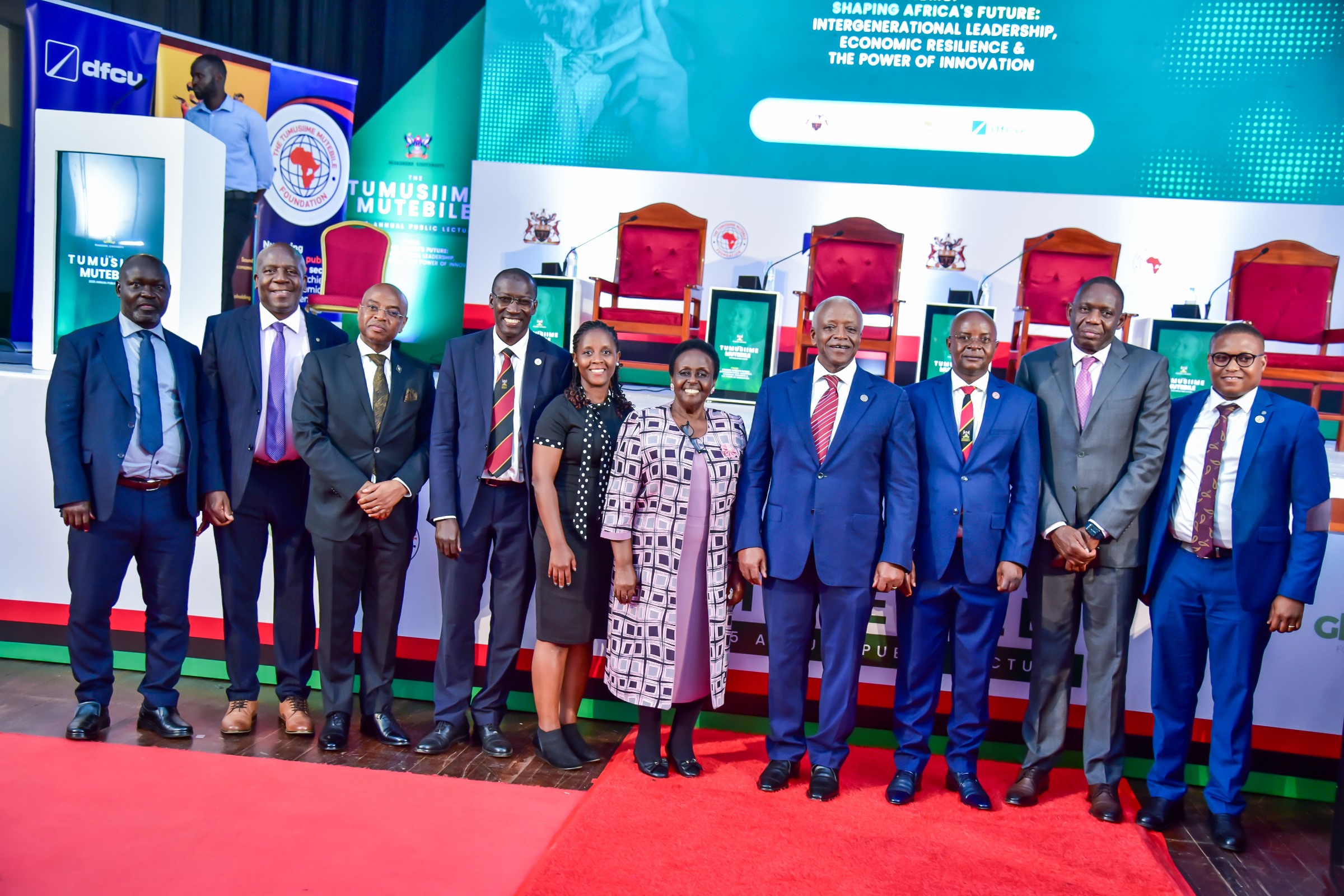
Makerere University on 3rd December, 2025 hosted the Tumusiime Mutebile Annual Lecture, a tradition established to honour the life and legacy of the late Prof. Emmanuel Tumusiime-Mutebile, an outstanding alumnus and former Governor of the Bank of Uganda who passed away in 2022. The lecture not only reflects on his remarkable contribution to Uganda’s economic leadership, but also highlights how innovation, resilience, and intergenerational vision can shape Africa’s future.
This year’s edition was anchored on three key pillars—intergenerational leadership, economic resilience, and the power of innovation—themes that defined Prof. Mutebile’s career and continue to influence national development. Through this annual series, the University upholds his memory while also celebrating other African leaders whose work has left a lasting mark on the continent, using their legacies to inspire thoughtful dialogue, policy reflection, and the next generation of transformative thinkers.
Celebrating an Enduring Legacy
In her remarks, the Acting Vice Chancellor, Prof. Sarah Ssali, reflected on Prof. Mutebile’s lifelong commitment to excellence, integrity, and the transformative power of education. She highlighted his journey from a student leader at Makerere to one of the country’s most influential economic thinkers, noting how his leadership in monetary policy, fiscal reform, and economic stabilization reshaped Uganda’s economic trajectory.
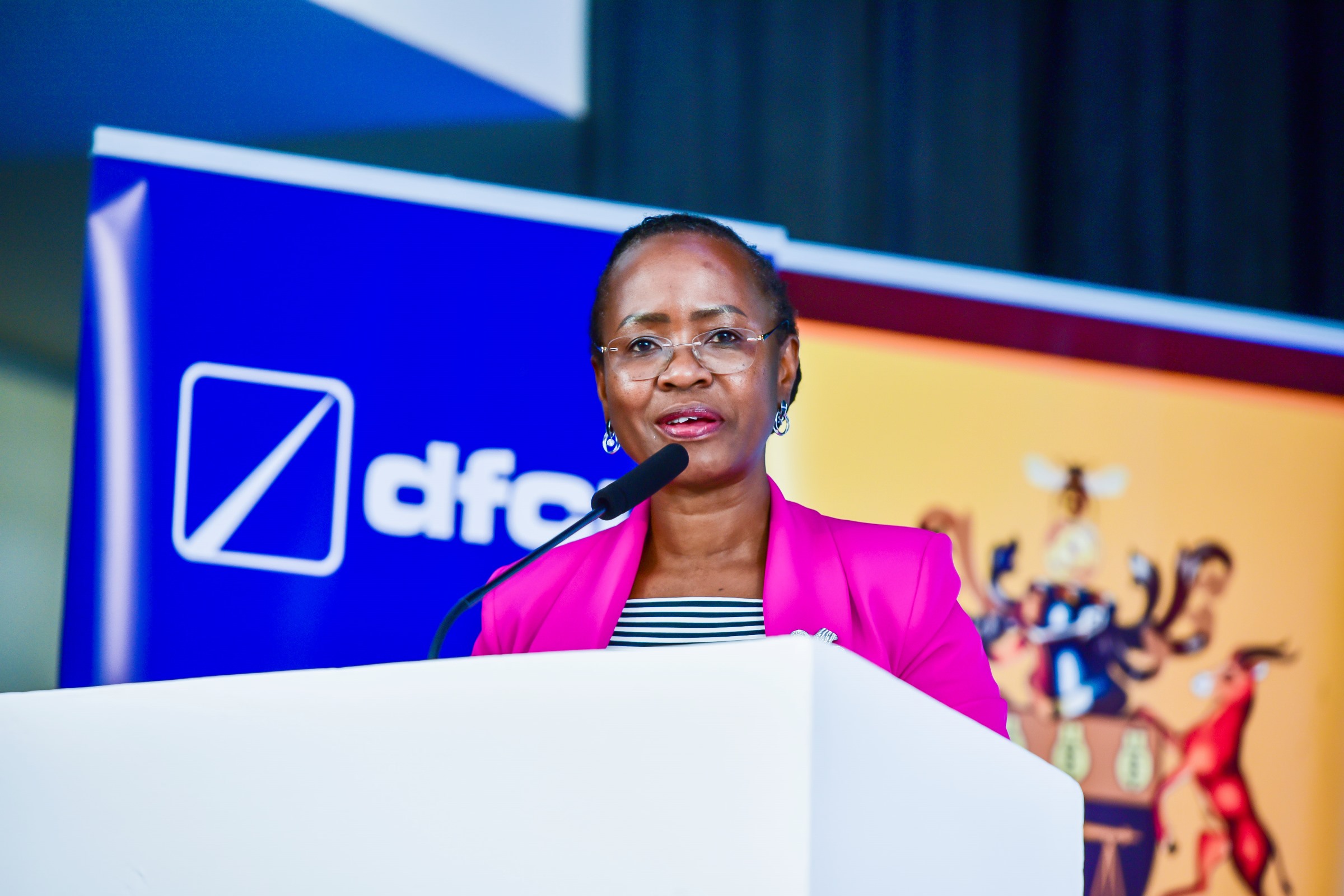
Prof. Ssali emphasized that this public lecture series not only honours Mutebile’s legacy but also bridges academia and practice—challenging students, scholars, and national leaders to pursue knowledge that serves the public good. She expressed gratitude to the Bank of Uganda under Dr. Michael Atingi-Ego, dfcu Bank, the GRO Foundation, the Mutebile family, and the Advancement Office for their continued support in sustaining a platform that nurtures economic thought leadership and inspires future generations.
Rt. Hon. Emeritus Amama Mbabazi, a lifelong friend and contemporary of the late Prof. Emmanuel Tumusiime-Mutebile, delivered a deeply personal reflection during the lecture. He recalled their shared beginnings as young student leaders at Makerere, their early political activism, and the historical moments that shaped both their lives and the nation. Speaking as both confidant and colleague, he emphasized Mutebile’s disciplined approach to economic policy, his unwavering belief in strong, accountable institutions, and his commitment to evidence-based, long-term decision making. Mbabazi outlined three pillars of Mutebile’s legacy—policy integrity, institutional strength, and leadership that prepares the next generation—values he affirmed are central to the work of the Tumusiime Foundation, which he now chairs.

He underscored the critical role of the private sector in Africa’s transformation, stressing the need for productivity-driven economies, skilled young people, and policy ecosystems that encourage innovation. He further called for intergenerational leadership that deliberately transfers knowledge, builds enduring institutions, and creates real opportunities for young Africans to lead. In closing, he urged academia, policymakers, and industry to work in partnership, noting that Africa’s progress depends on disciplined leadership, investment in human capital, and a shared commitment to building a future stronger than the present.
Fiscal Policies that have stood the test of time
The Governor of the Bank of Uganda, Dr. Michael Atingi-Ego, honored the late Prof. Emmanuel Tumusiime-Mutebile with a heartfelt tribute, praising him as “a great tree whose roots ran deep beneath the soil of this nation, nourishing all who followed.” He noted that Uganda continues to benefit from the “shade” of the policies Mutebile planted during his 21-year tenure—policies that stabilized the economy, strengthened institutions, and protected the financial system through multiple crises. He highlighted Mutebile’s role in restoring price stability through cash budgeting, bringing inflation down from triple digits to single digits, guiding the country through the 2008 global financial crisis with disciplined monetary policy, and maintaining public trust during the 2011 inflation spike through clear and transparent communication.

Dr. Atingi-Ego also credited him for steering Uganda safely through the COVID-19 pandemic by introducing liquidity support for banks, credit relief for borrowers, and targeted foreign exchange interventions. Reflecting on Mutebile’s long-term impact, the Governor remarked, “These are the ideas he planted—he never lived to enjoy the shade of the tree, but today, the country rests under it.” He further celebrated Mutebile’s commitment to innovation, citing the 2016 amendments to the Financial Institutions Act that unlocked agency banking, bancassurance, and Islamic banking—reforms that today anchor Uganda’s impressive financial inclusion gains.
Intergenerational Leadership blends agility and emotional intelligence
Eng. Dr. F. F. Tusubira delivered a compelling and deeply reflective keynote, grounding the theme “Intergenerational Leadership, Economic Resilience and the Power of Innovation” in both history and lived institutional experience. He expressed serious concern that although Africa is the world’s youngest continent—with over 65% of its population below 35—its systems continue to sideline young people from leadership and national decision-making, even as they are repeatedly called “leaders of tomorrow.” He argued that this generational exclusion is not merely unfair but dangerous, warning that nations cannot secure economic resilience while locking out the very demographic best equipped to navigate a rapidly evolving, technology-driven world.
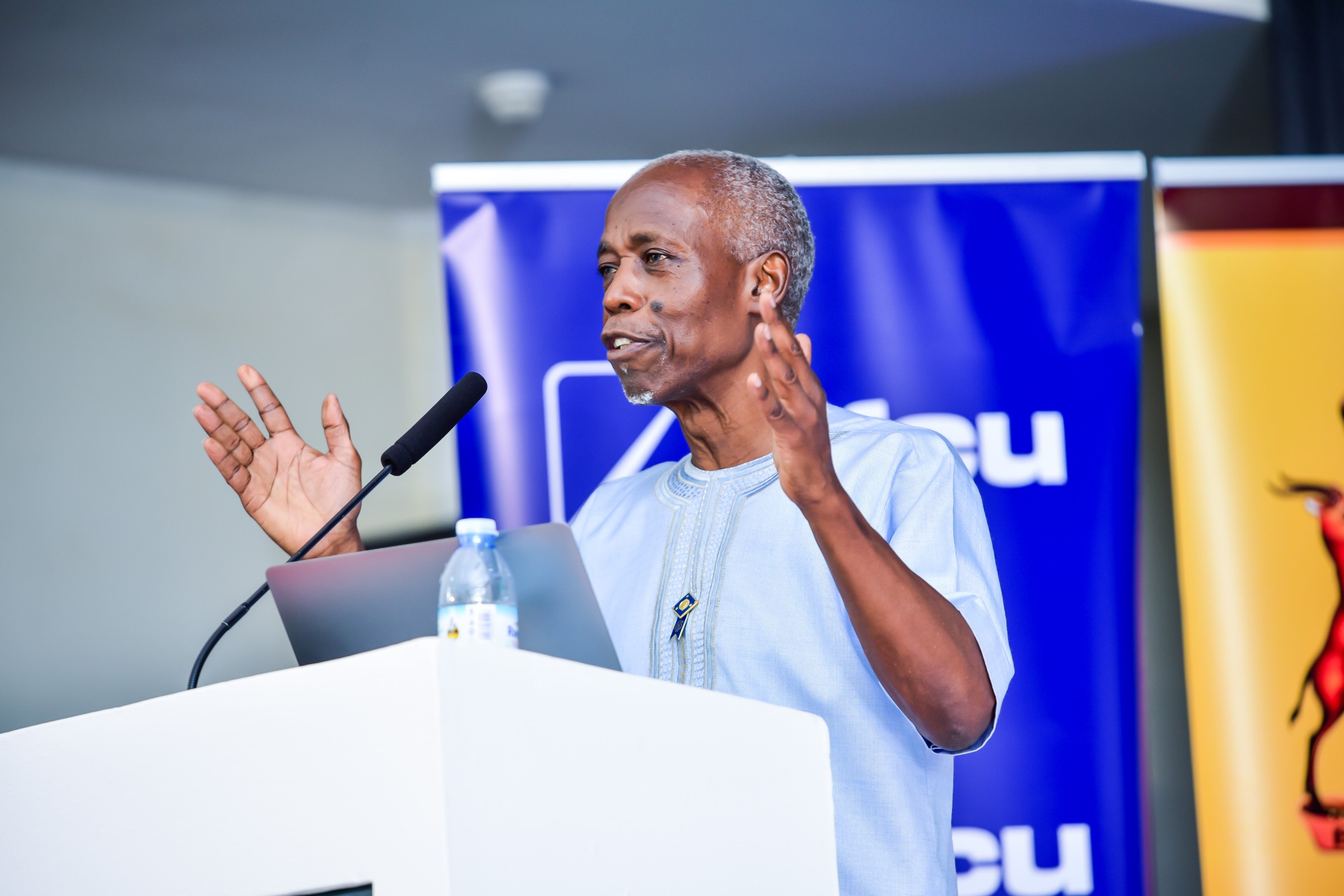
Drawing on African proverbs, global case studies, and personal anecdotes from Makerere and national institutions, he demonstrated how younger generations bring idealism, agility, innovation, and risk-taking—qualities essential for competitiveness—while older generations contribute emotional intelligence, institutional memory and a heightened sense of danger. He emphasized that progress requires blending these strengths through deliberate structures: fair representation of youth in boards and executive spaces, shared decision-making, reverse mentorship, and an institutional culture that values every generational perspective.

Dr. Tusubira also highlighted the urgent need for education reform, criticizing the continent’s entrenched “learning to pass exams” culture and calling for systems that cultivate creativity, problem-solving, and technical capability. He cautioned that without investing in human capital, digital literacy, and inclusive innovation ecosystems, Africa risks losing the very foundation of future competitiveness. His message was clear and powerful: intergenerational leadership is not optional—it is a survival strategy for institutions, businesses, and nations, especially in an era where, as he quoted, “it is not the strongest who survive, but those most responsive to change.”
The lecture was further enriched by an engaging panel discussion, which was moderated by Prof. Edward Bbaale, the Principal, College of Business and Management Sciences. He opened the discussion by deliberately centering today’s students and emerging leaders, framing the session as an intellectual reflection on the life, values and legacy of the late Prof. Emmanuel Tumusiime-Mutebile. He positioned the lecture’s theme — Shaping Africa’s Future: Intergenerational Leadership, Economic Resilience and the Power of Innovation — as urgent and practical, and introduced a cross-disciplinary panel whose expertise mirrors that urgency: Eng. Dr. F. F. Tusubira, Mr. Charles Mudiwa the Managing Director Dfcu Bank, and Prof. Faisal Buyinza the Ag. Dean, School of Economics.

Prof. Bbaale’s moderation enabled panelists to offer guidance on structural and cultural barriers to youth inclusion, the role of institutions in building resilience, and how academia, industry and policy can work together to turn innovation into jobs and scalable solutions — all the while reserving time for direct audience engagement and practical policy takeaways. Collectively, the panelists urged dismantling age-biased barriers and credential rigidities, creating new entry points and “tables” for youth leadership, scaling finance and training for startups and agribusiness, reforming pedagogy to prioritise skills and creativity, and deepening public-private-academic partnerships so innovation becomes inclusive growth rather than isolated experimentation.
The Family’s heartfelt appreciation
Mrs. Betty Tumusiime-Mutebile delivered heartfelt closing remarks, offering gratitude on behalf of the family and the Tumusiime-Mutebile Foundation. Speaking with deep emotion, she reflected on the late Professor’s character—his honesty, humility, hard work, and unwavering commitment to service above self. She thanked Makerere University, the Bank of Uganda, the Foundation’s leadership, and the many friends and colleagues who have continued to uphold his legacy, noting that although nearly four years have passed since his departure, his memory remains vivid and powerful for the family.

She recalled his devotion to both his public duty and his home, sharing personal stories of his leadership within the family and his steadfast faith that shaped their daily lives. Mrs. Tumusiime-Mutebile also highlighted the Foundation’s ongoing work in youth skilling, ethical governance, and private-sector development—initiatives rooted in his own vision. She concluded by inviting continued partnership to sustain the legacy he built, and led the gathering in singing his favourite chorus, a tender tribute to a man whose influence, she said, endures through the lives he touched.
Trending
-

 General2 weeks ago
General2 weeks agoFrom Mastercard Foundation Scholar to Changemaker: Dr. Ekwaro Ronald’s Vision for Eye Health in Uganda
-

 General6 days ago
General6 days agoCall For Expression of Interest: WEE-DiFine Research Initiative
-
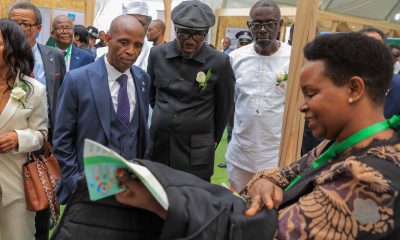
 Agriculture & Environment1 week ago
Agriculture & Environment1 week agoHow transformative education is shaping Africa’s next generation of innovators
-
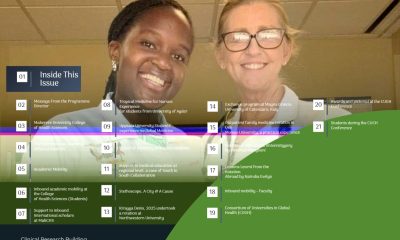
 Health2 weeks ago
Health2 weeks agoInternational Coordination Office Newsletter, Issue 1 Jan–Jun 2025
-
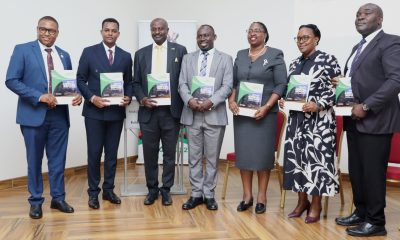
 Business & Management1 week ago
Business & Management1 week agoEfD-Mak, GRO Foundation & BoU Hold High-Level Roundtable on Green and SDG-Linked Financing
